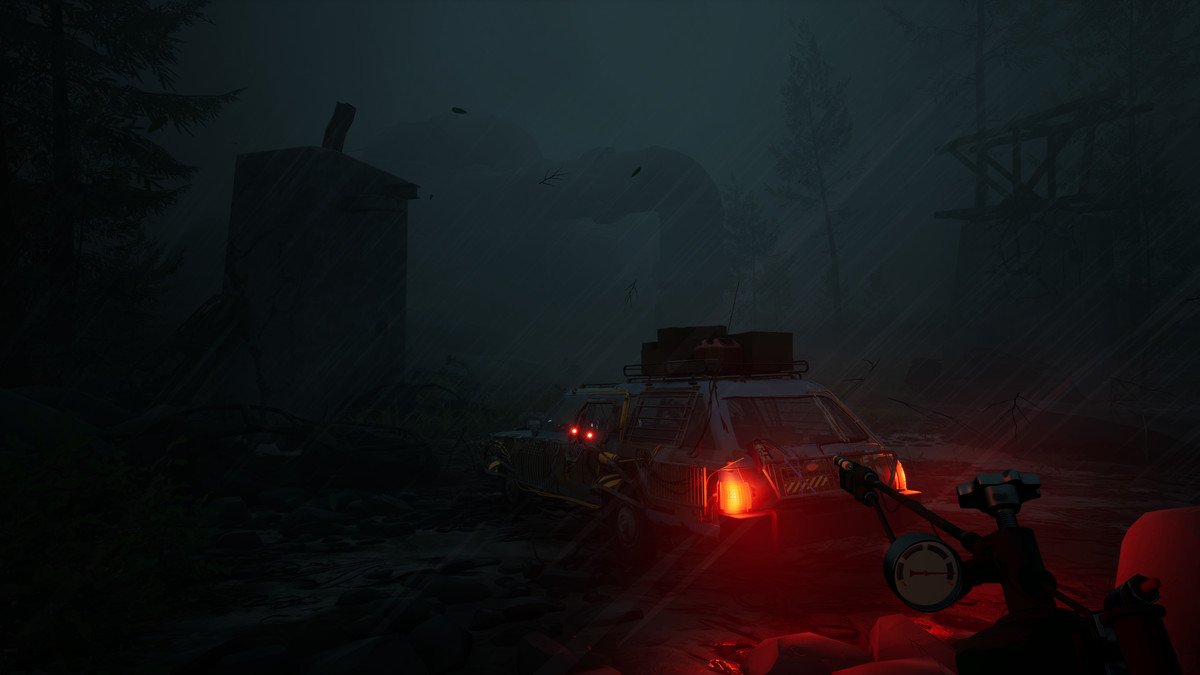Pacific Drive makes you fall in love with an old station wagon
Ironwood Studios’ Pacific drive is a road trip game about a drive through a disintegrating, irradiated reality; it’s like American truck simulator was set in a lonely, survivalist version of Fallout. Transported – by accident or on purpose, it’s not clear – to the Olympic Exclusion Zone somewhere among the forested slopes of the Pacific Northwest, the unnamed player character must guide a derelict station wagon deeper into this area, where gravity and matter obey their own rules. .
Pacific drive is not really about driving, but about the car. In a preview build that covered the game’s first few hours, the game had a core looting, crafting, and exploring loop, perhaps reminiscent of No one’s heaven on harder difficulties, where the primary goal is to gather enough materials to patch up your retro car just enough to make it through the next few miles. Eventually you’ll start improving your car – transforming this rusting heap, with its missing panels and cardboard storage space, into a custom-built end-of-the-world exploration vehicle, loaded with Mad Max-style welded armor and homebrew technology . from Ghostbusters.
The design of Pacific drive also borrows some elements from roguelites. The game consists of a series of runs from the same starting point: a shelter/garage where you can park, customize, charge and refuel your vehicle. Each run takes you through random ‘node’ areas on your way to a mission destination, after which your only option is to activate a ‘gateway’ – a giant, raging beam of light that pierces the Earth – and ride it to return go home and start again. Keeping your car together on each of these trips, and returning with enough bounty to upgrade it for the next trip, that’s what Pacific drive it’s all about.
Image: Ironwood Studios/Kepler Interactive
It’s a great premise, especially buoyed by the game’s attractive vision of a desolate, late 20th-century sci-fi wasteland where anomalies shimmer and spark amid the towering evergreen trees and gravity storms ravage the landscape. Based on the preview build, which includes the introductory missions, it’s a starting point Pacific drive will make it happen – even if it gets in the way a bit at first.
This is a complex game that doesn’t explain itself very well, with an overloaded user interface and some funky control scheme decisions. It is not an attempt to be deliberately inscrutable or mysterious; Pacific drive just kind of stumbles over himself while introducing himself. That results in a certain amount of frustration as you muddle through the tinkering options and try to keep up with the deluge of information about everything that could possibly be wrong with your car. This is one of those games where it might be a good idea to start over a few hours later, once you’ve figured it out.
Some of Pacific driveThe book’s readability has also been sacrificed – perhaps rightly – in the name of maintaining its impeccable retro aesthetic. It is set in an alternative late 1990s – but also in a no man’s land that seems to have been abandoned by military, business and scientific interests a decade or two earlier – Pacific drive is a world of glowing cathode ray tubes and thick pixelated fonts, right at the turning point between late analog and early digital technology. The car is equipped with a radio that whines and distorts as it plays snippets of illustrative chat and low-fi driving tunes (a nicely curated selection of licensed songs that perfectly match Pacific drive‘s vision of Simon Stålenhag after the apocalypse and memories of childhood road trips).

Image: Ironwood Studios/Kepler Interactive
One of Ironwood’s best decisions is to fully ground the player in the physical reality of this world by allowing full first-person camera control, even while driving, and insisting that the player have an extensive map/information system in the universe, called the ARC Relay. on the passenger seat instead of displaying a menu screen or relying on a HUD. It helps a lot to look over your shoulder for an anomaly while driving, or tilt the view so you can keep one eye on the road and the other on your hulking, flickering proto-GPS.
It’s also worth noting that this isn’t a fast-paced racing game. Driving in Pacific drive is about coaxing cautious off-road exploration out of your aging station wagon, gingerly picking your way through eerie scenes of posed crash test dummies, and always remembering to turn off the ignition and put the car in park when you stop (to to avoid wasting fuel). idling or rolling the car down a slope).
There’s a story of sorts here too, told through the disembodied voices of other Zone residents offering guidance over the radio. They spin some lore around ‘Remnants’, what they call miraculously functioning pieces of technology that exist within the Zone – including your car – and that wield a mystical power over their owners. But this explanation is superfluous. I don’t need the plot of the game to explain to me that my world revolves around this car. Pacific driveThe design and mechanics of the machine already ensure this.
Pacific drive will be released on February 22 for PlayStation 5 and Windows PC (via Steam and the Epic Games Store).
